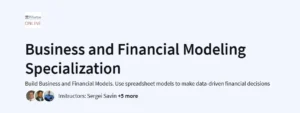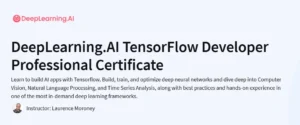What will you learn in Learn Data Science Course
Master the data analysis workflow from raw data to actionable insights.
Use Python’s Pandas library for efficient data manipulation and cleaning.
Handle missing values, detect outliers, and perform feature engineering.
Create publication-quality visualizations with Matplotlib and Seaborn.
Program Overview
Module 1: Introduction to Data Analysis
⏳ 1.5 hours
Topics: Overview of analysis lifecycle, data formats, project planning.
Hands-on: Outline a data analysis project and explore sample datasets.
Module 2: Python & Pandas Essentials
⏳ 2 hours
Topics: Series and DataFrame objects, indexing, filtering, merging.
Hands-on: Load CSV/Excel data into Pandas and perform basic manipulations.
Module 3: Data Cleaning & Wrangling
⏳ 3 hours
Topics: Handling missing data, outlier detection, type conversion, feature creation.
Hands-on: Clean a messy dataset and engineer new variables for analysis.
Module 4: Exploratory Data Visualization
⏳ 2.5 hours
Topics: Histograms, box plots, scatter plots, pair plots, and heatmaps.
Hands-on: Visualize distributions and relationships to uncover insights.
Module 5: Statistical Analysis
⏳ 2.5 hours
Topics: Descriptive statistics, correlation, hypothesis testing, confidence intervals.
Hands-on: Compute summary metrics and perform t-tests and chi-square tests.
Module 6: SQL for Data Analysis
⏳ 2 hours
Topics: SELECT statements, joins, aggregations, subqueries, window functions.
Hands-on: Query a sample relational database to extract and summarize data.
Module 7: Time Series Analysis
⏳ 2 hours
Topics: Date/time handling, rolling statistics, seasonal decomposition, simple forecasting.
Hands-on: Analyze sales data over time and generate trend charts.
Module 8: Dashboarding & Reporting
⏳ 2 hours
Topics: Designing dashboards, interactive widgets with Plotly or Streamlit basics.
Hands-on: Build a simple dashboard to present key metrics.
Module 9: Capstone Project
⏳ 2.5 hours
Topics: End-to-end project planning, execution, and presentation.
Hands-on: Complete a full analysis—from data ingestion to a polished report—and share results.
Get certificate
Job Outlook
Data analysts are in strong demand across tech, finance, healthcare, and e-commerce.
Roles such as Data Analyst, Business Intelligence Analyst, and Reporting Specialist typically command $70K–$100K USD.
Expertise in Python, Pandas, SQL, and visualization tools accelerates career growth and unlocks remote and freelance opportunities.
Strong analysis skills lead to paths in analytics engineering, data science, and digital reporting.
Specification: Learn Data Science Course
|
FAQs
- Basic Python familiarity is recommended, but no advanced analytics experience is required.
- The course introduces Pandas, SQL, Matplotlib, and Seaborn step by step.
- Hands-on exercises cover data cleaning, manipulation, and visualization.
- Ideal for beginners aiming to pursue data analyst roles.
- Exposure to spreadsheets or basic statistics helps but is optional.
- Yes, includes end-to-end workflow: data ingestion → cleaning → analysis → visualization → reporting.
- Hands-on labs simulate datasets from finance, healthcare, and e-commerce.
- Learners gain experience in generating actionable insights and dashboards.
- Teaches basic statistical analysis, hypothesis testing, and trend analysis.
- Prepares learners for professional reporting and decision-making tasks.
- Data Analyst, Business Intelligence Analyst, Reporting Specialist.
- Freelance or remote analytics roles in tech, finance, healthcare, and e-commerce.
- Prepares for progression to Data Scientist or Analytics Engineer with further learning.
- Typical salaries range $70K–$100K USD depending on experience and location.
- Skills in Python, Pandas, SQL, and visualization improve employability.
- Integrates Python, SQL, statistics, and visualization for end-to-end data workflows.
- Hands-on projects simulate real business scenarios rather than focusing on syntax alone.
- Includes dashboard creation and reporting for decision-making.
- Unlike generic tutorials, it emphasizes professional analytics skills for real datasets.
- Covers time series and interactive reporting, not just basic querying or coding.
- Yes, covers Matplotlib, Seaborn, and basic Plotly or Streamlit dashboards.
- Learners create interactive and publication-ready visuals.
- Prepares learners to communicate insights to stakeholders effectively.
- Supports professional reporting, dashboards, and business presentations.
- Enables learners to translate raw data into actionable insights.





